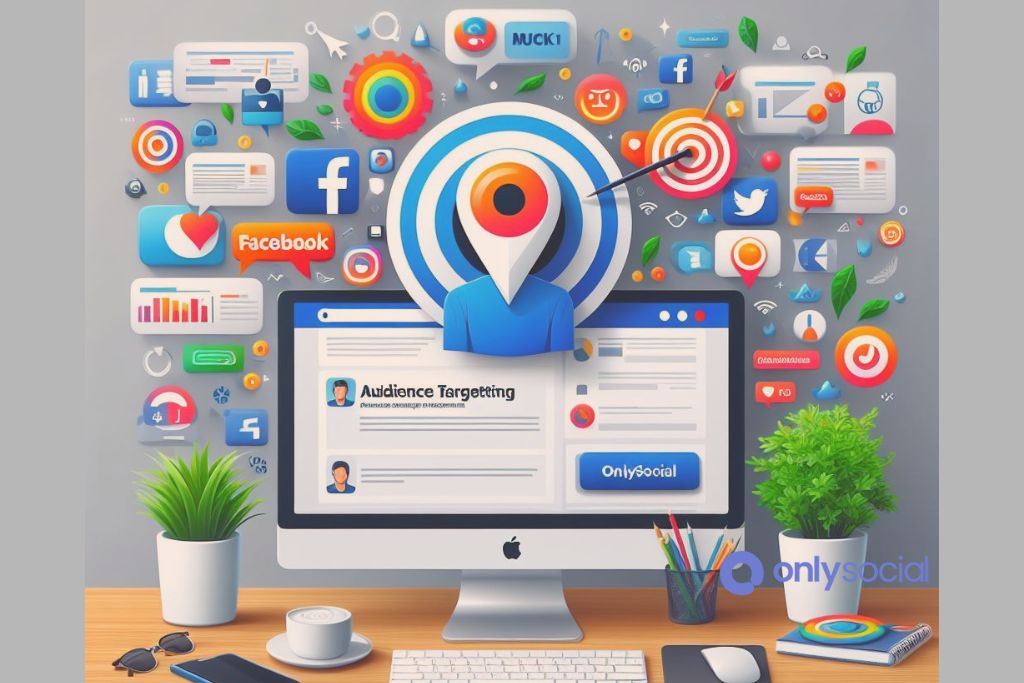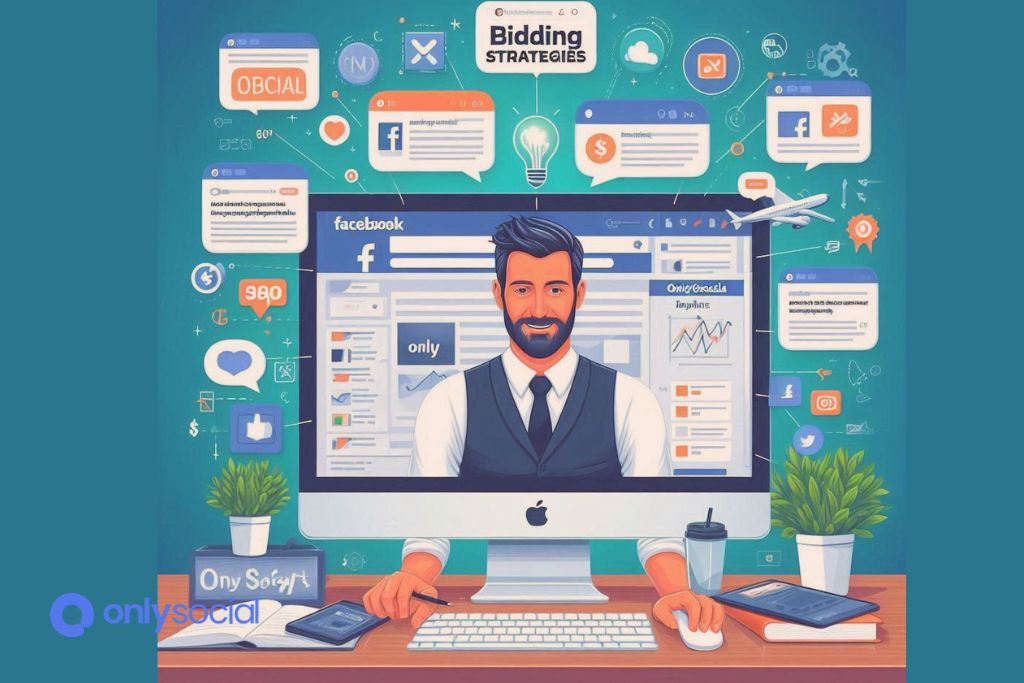In the dynamic world of digital marketing, the mantra for success is to constantly evolve. As we step into 2024, the digital landscape is more competitive and complex than ever before. makes it imperative for businesses and marketers to transform their marketing strategies to not just adapt, but also to lead and set new benchmarks. The power of Facebook advertising, with its extensive reach and robust targeting capabilities, stands out as a pivotal tool in this transformation journey.
Table of Contents
- 0.1 The Pillars of Transformation in Digital Marketing
- 0.2 The Role of Facebook Advertising in Transforming Your Marketing
- 1 Step 1: Clearly Define Your Marketing Objectives
- 2 Step 2: Deep Dive into Audience Targeting
- 3 Step 3: Budget Allocation and Bidding Strategies
- 4 Step 4: Crafting Compelling Ad Creatives
- 5 Step 5: Choosing the Right Ad Formats
- 6 Step 6: Optimizing Ad Placement
- 7 Step 7: Continuous Testing and Campaign Optimization
- 8 Step 8: Scaling Your Successful Campaigns
- 9 BONUS
- 10 Frequently Asked Questions
- 10.0.1 How can I ensure my Facebook advertising strategy is up-to-date in 2024?
- 10.0.2 What are the key elements of a successful Facebook ad campaign?
- 10.0.3 How important is audience targeting in Facebook advertising?
- 10.0.4 Can small businesses compete with larger companies on Facebook advertising?
- 10.0.5 How do I measure the success of my Facebook advertising campaigns?
- 10.0.6 What is A/B testing, and why is it important in Facebook advertising?
- 10.0.7 Is video content really more effective in Facebook ads?
- 10.0.8 How can I optimize ad placements for better performance?
- 10.0.9 What strategies can I use to scale my successful Facebook ad campaigns?
- 10.0.10 How frequently should I review and adjust my Facebook advertising strategies?
The Pillars of Transformation in Digital Marketing
To effectively transform your marketing strategies, understanding the pillars that hold this transformation is crucial. These pillars not only guide the strategic direction but also enforce the execution of high-impact marketing campaigns.
The Evolution of Consumer Behavior
- Shifts in Digital Consumption: Changes in how consumers interact with digital content, platforms, and advertising.
- Expectation for Personalization: Increasing demand for personalized experiences and content.
Technological Advancements
- AI and Automation: Leveraging artificial intelligence and automation for smarter, more efficient campaigns.
- Data Analytics and Insights: Using data-driven insights to inform strategy and decision-making.
Integrating Omnichannel Strategies
- Seamless User Experiences: Creating cohesive experiences across various digital platforms.
- Engagement Optimization: Strategies to engage audiences in more meaningful, impactful ways.
The Role of Facebook Advertising in Transforming Your Marketing
Facebook advertising emerges as a champion in enabling businesses to navigate these pillars effectively. With over 2.8 billion monthly active users, Facebook’s platform offers an unparalleled opportunity to connect with audiences worldwide. But how exactly does Facebook fit into the puzzle of transformation? Let’s delve into specifics:
| Aspect of Transformation | Role of Facebook Advertising |
|---|---|
| Audience Reach & Engagement | Access to a vast, diverse user base with high engagement rates. |
| Targeting Precision | Robust targeting options based on demographics, interests, behavior, and more. |
| Creative Flexibility | Variety of ad formats to cater to different objectives and creative expressions. |
| Performance Tracking & Optimization | Advanced analytics and tools to track performance, optimize campaigns, and maximize ROI. |
By leveraging Facebook advertising, businesses can not only reach broader audiences but also create more tailored, interactive, and effective marketing campaigns. In doing so, the ultimate goal is to not just transform your marketing but to elevate your brand’s digital presence and drive significant outcomes in 2024 and beyond.
Transforming your marketing in the digital age requires a blend of strategic vision, an understanding of evolving technologies, and the effective use of powerful platforms like Facebook. As we navigate the intricate aspects of digital marketing transformation, the emphasis is on actionable strategies that align with the changing landscape, consumer expectations, and technological advancements, all of which are vital for achieving sustained growth and relevance in an increasingly digital world.
Step 1: Clearly Define Your Marketing Objectives

To truly transform your marketing in the rapidly evolving digital landscape, the first and most critical step involves setting clear and strategic marketing objectives. These objectives are the lighthouse guiding your entire Facebook advertising strategy, ensuring every decision made aligns with your ultimate goals.
Understanding the Importance of Clear Objectives
The Foundation of Strategic Marketing
- Direction: Clearly defined objectives provide a clear direction for your Facebook campaigns, ensuring every action contributes towards these goals.
- Measurement: With specific objectives, it becomes easier to measure success and assess the effectiveness of your marketing efforts.
Setting SMART Objectives to Transform Your Marketing
To ensure your objectives have the potency to transform your marketing, they should be SMART:
- Specific: Well-defined and clear to everyone involved.
- Measurable: Quantifiable to track progress and measure the outcome.
- Achievable: Realistic and attainable within your resources and timelines.
- Relevant: Aligned with your broader marketing and business goals.
- Time-bound: Having a clear deadline to focus efforts and priorities.
Crafting Your Objectives
When laying down your objectives, consider the various facets that Facebook advertising can enhance:
| Objective Area | Description | Examples |
|---|---|---|
| Brand Awareness | Increase the visibility of your brand among target audiences. | “Increase brand-related searches by 20% in 6 months.” |
| Engagement | Boost the level of interaction with your audience through likes, comments, and shares. | “Double the engagement rate on posts by Q4.” |
| Traffic | Drive more visitors to your website or landing page. | “Increase website traffic from Facebook ads by 30% in 3 months.” |
| Lead Generation | Collect information from prospects to nurture and convert into customers. | “Generate 500 new leads per month from Facebook ad campaigns.” |
| Sales | Directly increase the number of sales through Facebook ads. | “Achieve a 10% increase in online sales from Facebook-driven traffic in the next quarter.” |
The Role of Objectives in Transforming Your Marketing
Setting these objectives is not just about improving numbers or performance metrics. It’s about strategically aligning your Facebook advertising efforts with your broader marketing and business strategy to ensure that every ad, every campaign, and every dollar spent moves you closer to your vision of success. In essence, clear, well-defined objectives are the first crucial step to transform your marketing — ensuring that your brand not only stands out in the crowded digital space but also resonates deeply with your target audience, driving meaningful engagement and results.
Step 2: Deep Dive into Audience Targeting

Audience targeting is the cornerstone of any campaign poised to transform your marketing. With Facebook’s robust targeting capabilities, marketers can pinpoint their ideal customers amongst billions of users. This precision not only drives efficiency and effectiveness but also significantly enhances return on investment (ROI).
The Fundamentals of Facebook Audience Targeting
Understanding Your Audience
- Demographics: Age, gender, education, job titles, and more.
- Interests: What they like, share, and engage with.
- Behaviors: Purchase behavior, device usage, and other activities.
The Power of Detailed Targeting
Facebook allows you to combine demographics, interests, and behaviors to define your target audience with remarkable specificity. This enables you to transform your marketing efforts by reaching the people most likely to be interested in your offerings.
Types of Facebook Targeting Options
| Targeting Type | Description |
|---|---|
| Core Audiences | Target based on demographics, location, interests, and behaviors. |
| Custom Audiences | Engage with people who have interacted with your business, online or off. |
| Lookalike Audiences | Reach new people whose interests are similar to those of your best customers. |
Utilizing Advanced Targeting for Enhanced Engagement
Creating Custom Audiences
Leveraging data from your website visitors, app users, or Facebook engagement allows you to re-engage those who are already familiar with your brand, making your marketing efforts more efficient and effective.
Expanding Reach with Lookalike Audiences
Lookalike audiences help you discover new users who share characteristics with your current customers, thereby extending your reach while maintaining relevance — a key strategy to transform your marketing.
The Intersection of Audience Targeting and Marketing Transformation
Aligning Targeting with Business Goals
The specifics of your audience targeting should directly reflect your marketing objectives. Whether you’re driving brand awareness, generating leads, or pushing sales, your targeting decisions should be intricately aligned with these goals.
Continuous Optimization and Learning
The real magic in transforming your marketing through audience targeting lies in constant optimization. Use Facebook’s analytics to learn which audience segments are most responsive and refine your targeting to increase engagement.
By diving deep into audience targeting on Facebook, you place your brand in an advantageous position to not only reach your ideal customers but to do so in a way that is both cost-effective and highly impactful. The precise targeting options available through Facebook advertising are unparalleled and, when used correctly, can significantly transform your marketing outcomes. This journey of audience discovery and optimization is not just about better targeting but about building deeper connections with your audience — the true hallmark of a successful digital marketing transformation.
Step 3: Budget Allocation and Bidding Strategies

Effective budget allocation and bidding strategies are essential to transform your marketing on Facebook. Ensuring that your budget is utilized efficiently will maximize your campaign’s return on investment (ROI), driving the results that matter most to your business.
Understanding Allocation
Setting Your Advertising Budget
- Daily vs. Lifetime Budgets: Decide whether to allocate a daily budget that controls daily spending or a lifetime budget for the campaign’s duration.
The Essentials of Bidding Strategies
How Bidding Works on Facebook
Facebook advertising utilizes a bidding system to determine which ads are shown to users. Your bid represents how much you’re willing to pay for your ad to be shown to your target audience.
Key Bidding Strategies to Transform Your Marketing
| Strategy | Description | Best For |
|---|---|---|
| Lowest Cost | Facebook automatically sets your bid to get the most results at the lowest cost. | Maximizing results with a flexible budget. |
| Cost Cap | Set a maximum average cost per action (CPA) to control costs while driving results. | Balancing cost control with result generation. |
| Bid Cap | Set the maximum bid for your ad auctions. | Maximizing control over auction bids. |
| Value Optimization | Optimize for the highest value rather than the lowest cost per conversion. | Focusing on high-value conversions. |
Balancing Budget and Bidding to Maximize Impact
Analyze and Adjust
Continuously monitor your campaigns to understand how your budget and bids are performing. Adjust based on performance data to ensure your marketing budget is being used effectively.
Test and Learn
Experiment with different bidding strategies and budget allocations. A/B testing can reveal insights that allow you to optimize your spend and transform your marketing efforts on Facebook.
Through thoughtful budget allocation and strategic bidding, you can significantly enhance your Facebook advertising efforts. This not only ensures that your marketing dollars are spent wisely but also drives better, more cost-effective results. Transform your marketing by making informed decisions that optimize your spending and maximize your impact on Facebook.
By strategically managing your budget allocation and bidding strategies, you position your brand to efficiently reach its desired audience, optimize ad spend, and ultimately, transform your marketing outcomes. Understanding and implementing these strategies are crucial steps toward leveraging Facebook’s vast advertising platform to its full potential, thus ensuring a greater return on investment and a stronger market presence.
Step 4: Crafting Compelling Ad Creatives
Compelling ad creatives are at the heart of any campaign aiming to transform your marketing on Facebook. The visual and textual elements of your ad are what capture attention, convey your message, and ultimately drive your audience to take action.
The Ingredients of Compelling Ad Creatives
Visual Elements
- Engaging Imagery: High-quality, relevant images or videos that grab attention.
- Branding: Consistent use of your brand’s colors, logos, and style to build recognition.
Textual Elements
- Headline: A concise, powerful statement that encapsulates the value proposition.
- Ad Copy: Clear, persuasive text that elaborates on the headline and encourages action.
Aligning Creatives with Campaign Objectives
| Campaign Objective | Creative Focus |
|---|---|
| Brand Awareness | Eye-catching visuals and memorable slogans. |
| Lead Generation | Clear value proposition and strong call-to-action (CTA). |
| Sales Conversion | Product benefits, customer testimonials, and discounts or promotions. |
Guidelines for Crafting Effective Ad Creatives
Prioritize Clarity and Consistency
Ensure your message is easily understood and your visual identity remains consistent across all creatives to transform your marketing strategy effectively.
Emphasize Value Proposition
Make sure your creatives clearly communicate the unique value your product or service offers, making it the focal point of your ad.
Optimize for Mobile
Design your creatives with a mobile-first approach, considering most Facebook users access the platform on mobile devices.
Test and Optimize
Regularly test different creative elements (images, headlines, CTA buttons) to discover what resonates best with your target audience and optimize based on performance data.
Crafting ad creatives that stand out and deliver your message effectively is a crucial step to transforming your marketing efforts on Facebook. These creatives are the frontline of your campaign, making the first impression on your audience, and driving the engagement and conversions that will contribute to your overall marketing success. By focusing on the quality and relevance of your ad creatives, you position your campaigns to achieve greater impact, fostering deeper connections with your audience and driving towards your marketing objectives.
Step 5: Choosing the Right Ad Formats
Selecting the appropriate ad formats is a pivotal step in leveraging Facebook advertising to transform your marketing. Facebook offers a variety of ad formats tailored to different campaign goals and audience engagement strategies. Understanding the strengths and applications of each format can significantly enhance the impact of your marketing efforts.
Overview of Facebook Ad Formats
The Role of Ad Formats in Achieving Campaign Objectives
Utilizing the right ad format can elevate the user experience, increase engagement, and drive your desired outcomes, whether it’s brand awareness, lead generation, or conversions.
Key Facebook Ad Formats
| Ad Format | Description | Best Used For |
|---|---|---|
| Image Ads | Simple, versatile ads using engaging images. | Quick campaigns to increase brand visibility. |
| Video Ads | Ads featuring videos that can play in the news feed, stories, or as in-stream ads. | Telling a brand story or showcasing a product in action. |
| Carousel Ads | Ads allowing multiple images or videos in a single ad, each with its own link. | Showcasing multiple products or highlighting different features of a single product. |
| Slideshow Ads | Video-like ads made from a series of still images, text, or video clips. | Reaching people with slower internet speeds or promoting products with dynamic visuals. |
| Collection Ads | Ads that open to a full-screen mobile experience, allowing users to browse more products. | Immersive shopping experiences to drive e-commerce sales. |
Tailoring Ad Formats to Your Marketing Strategy
Matching Ad Formats with Marketing Objectives
To truly transform your marketing, carefully consider how each ad format can serve your specific campaign goals:
- Brand Awareness: Video ads and carousel ads can be particularly effective for storytelling and showcasing the breadth of a product line.
- Lead Generation: Image ads with clear, compelling calls-to-action (CTAs) are great for driving leads.
- Conversions: Collection ads offer an immersive experience that can significantly enhance online sales, especially for e-commerce brands.
Optimizing for Engagement and Conversion
- A/B Testing: Regularly test different ad formats against one another to determine what works best for your target audience and objectives.
- Creative Considerations: Ensure that the creative assets used in each ad format are optimized for that format, paying close attention to dimensions, file sizes, and copy length.
Choosing the right ad formats is crucial in crafting a Facebook advertising strategy that can transform your marketing. The effectiveness of your campaigns will greatly depend on how well the selected ad formats align with your marketing objectives and resonate with your target audience. By thoughtfully incorporating a variety of ad formats into your strategy, you can harness the full potential of Facebook advertising, engaging your audience in a meaningful way and driving them toward your desired action.
Step 6: Optimizing Ad Placement
Optimizing ad placement is a critical strategy to transform your marketing on Facebook. This step ensures that your ads are displayed in the most locations across Facebook’s platforms, including Instagram, Messenger, and the Network, to maximize visibility and engagement with your target audience.
Understanding Facebook Ad Placement Options
The Impact of Ad Placement on Performance
Ad placement can dramatically affect the performance of your campaign. Choosing the right placements ensures your ads reach your audience when and where they’re most likely to engage.
Key Ad Placement Options
| Placement Type | Platforms | Best Used For |
|---|---|---|
| Automatic Placements | Facebook, Instagram, Messenger, Audience Network | Maximizing reach and leveraging Facebook’s optimization to find the best placements. |
| Feed | Facebook, Instagram | High engagement rates; great for visibility and engagement. |
| Stories | Facebook, Instagram, Messenger | Capturing attention with immersive, full-screen content. |
| In-Stream | Facebook, Instagram | Engaging viewers with video content within other video content. |
| Messages | Messenger | Direct engagement with users in a personal space. |
| In-Article | Facebook Instant Articles | Placing ads in articles for an engaged reading audience. |
| Apps and Sites | Audience Network | Extending reach outside of Facebook-owned platforms. |
Strategies for Optimizing Ad Placement
Tailor Placement to Campaign Objectives
To effectively transform your marketing, align ad placements with specific campaign goals:
- Awareness campaigns: Utilize Automatic Placements to maximize reach across all platforms.
- Engagement campaigns: Focus on Feed and Stories for high-impact visibility.
- Conversion campaigns: Consider placements with high intent, such as Feed and In-Article, to drive actions.
Monitor and Adjust Based on Performance
- Performance Analysis: Regularly review placement performance in your campaign analytics. Identify which placements yield the best return on investment (ROI) and adjust accordingly.
- Adapt Creative to Placement: Customize ad creatives for the unique characteristics of each placement. For instance, leverage vertical formats for Stories and concise messages for Feed.
Optimizing ad placement is an ongoing process that involves continuous testing, analysis, and adjustment. By strategically selecting where your ads are shown, you can drastically transform your marketing efforts on Facebook. This strategic alignment ensures that your message reaches the right people in the right context, significantly enhancing campaign effectiveness and driving towards your business objectives.
Step 7: Continuous Testing and Campaign Optimization
To truly transform your marketing efforts and achieve the highest level of success with Facebook advertising, continuous testing and campaign optimization are essential. This proactive approach allows marketers to uncover valuable insights, refine strategies, and enhance overall campaign performance over time.
The Framework for Effective Testing
Establishing a Testing Plan
- Identify Key Variables: Focus on elements such as ad creatives, bidding strategies, ad placements, and target audiences.
- Set Clear Objectives: Define what success looks like for each test, whether it’s improving click-through rates, reducing cost per acquisition, or increasing engagement.
Implementing A/B Testing
| Component | Description |
|---|---|
| Test Group | Your campaign variation includes the changes you wish to test. |
| Control Group | Your original campaign setup serves as a benchmark. |
Steps for A/B Testing
- Select the Variable to Test: Choose one element to change to accurately measure its impact.
- Create Comparable Ad Sets: Develop test and control ad sets that are identical except for the variable in question.
- Monitor Performance: Collect data over a set period to ensure results are statistically significant.
- Analyze Results: Compare the performance of the test group against the control group to identify which variant achieved the best outcomes.
Strategies for Continuous Optimization
Refine and Repeat
- Continuous Learning: Utilize insights from each test to refine your marketing strategies.
- Ongoing Testing: Even after finding a winning strategy, continue testing to find additional improvements and adapt to changing market dynamics.
Leveraging Insights for Broader Marketing Strategies
- Apply lessons learned from Facebook ad testing to other marketing channels and campaigns, ensuring a cohesive and optimized marketing strategy across all platforms.
Continuous testing and campaign optimization are not just about improving individual ad sets but about embracing a culture of iterative improvement to transform your marketing efforts. By systematically testing, learning, and optimizing, marketers can continually enhance the effectiveness of their Facebook campaigns, leading to better performance, higher ROI, and ultimately, a stronger, more successful marketing strategy. This continuous improvement cycle ensures that your marketing efforts remain efficient, effective, and aligned with your business goals, driving sustained growth over time.
Step 8: Scaling Your Successful Campaigns
Scaling your successful campaigns is a pivotal move to transform your marketing and amplify your outcomes on Facebook. Once you’ve identified winning strategies through testing and optimizations, the next step is to expand their reach and impact without compromising on performance.
Identifying Campaigns to Scale
Criteria for Selection
- Performance Metrics: Look for campaigns that have consistently met or exceeded your key performance indicators (KPIs).
- Market Saturation: Consider the potential for wider reach within your target market without over-saturating it.
- Budget Efficiency: Focus on campaigns with a favorable cost-per-acquisition (CPA) or high return on ad spend (ROAS).
Strategies for Scaling Successfully
Gradual Budget Increases
- Incremental Approach: Boost your campaign budget gradually to avoid sudden changes that could affect delivery and efficiency.
- Monitoring Performance: Keep a close eye on performance metrics to ensure that the increased investment continues to meet your ROI goals.
Broadening Target Audiences
- Expanding Geographic Reach: Consider targeting new regions or countries that share characteristics with your current audience.
- Exploring New Segments: Use Facebook’s audience insights to identify additional demographics, interests, or behaviors that align with your campaign’s success.
Optimizing Bidding Strategies
- Adjusting Bid Strategy: Experiment with different bidding options, such as cost per click (CPC) or cost per thousand impressions (CPM), to find the most efficient use of your budget.
- Leveraging AI and Automation: Utilize Facebook’s automated bidding strategies to optimize ad delivery based on your campaign goals.
Scaling Through Platform Diversification
| Platform | Advantage |
|---|---|
| High engagement, especially with younger audiences. | |
| Messenger | Personalized engagement in a private messaging environment. |
| Audience Network | Extend reach beyond Facebook-owned properties, into third-party apps and websites. |
Leveraging Cross-Platform Synergies
- Unified Messaging: Ensure your campaign message is coherent across all platforms, leveraging the unique strengths of each.
- Creative Adaptation: Adjust your creative assets to fit the format and context of each platform, enhancing user engagement.
Scaling your successful Facebook campaigns can significantly transform your marketing by magnifying their impact and driving more significant results. It requires a strategic approach, focusing on gradual budget increases, audience expansion, bidding optimization, and cross-platform integration. By carefully scaling your efforts, you can enhance brand visibility, achieve higher engagement, and drive superior business outcomes, ultimately leveraging your successful campaigns to their full potential.
BONUS
To truly dominate Facebook advertising in 2024, integrating OnlySocial’s Post Planning and Scheduling tool into your strategy is imperative. Our platform empowers you to meticulously plan and schedule your content across all social networks, ensuring your message resonates far and wide without missing a beat. With the capacity for unlimited posting and management of limitless social profiles, OnlySocial streamlines your workflow, making it seamless to maintain a consistent and engaging online presence. Elevate your social media game by starting a commitment-free 7-day trial with OnlySocial today.
Frequently Asked Questions
How can I ensure my Facebook advertising strategy is up-to-date in 2024?
Stay informed about the latest trends, algorithms, and advertising tools Facebook offers. Regularly review and adjust your strategies based on performance analytics and keep testing new approaches to maintain a competitive edge.
What are the key elements of a successful Facebook ad campaign?
A successful Facebook ad campaign should have an objective, a well-defined target audience, compelling ad creatives, optimized ad placement, continuous testing for performance, and strategies for scaling successful campaigns. Tailoring your approach to these elements can significantly enhance the effectiveness of your marketing efforts.
How important is audience targeting in Facebook advertising?
Audience targeting is crucial as it ensures your ads are seen by users most likely to be interested in your product or service. Utilizing Facebook’s detailed targeting options, including demographics, interests, and behaviors, allows you to tailor your message to the right audience, increasing engagement and conversion rates.
Can small businesses compete with larger companies on Facebook advertising?
Yes, small businesses can effectively compete with larger companies by leveraging Facebook’s robust targeting options, creative ad formats, and the platform’s vast user base. Focusing on niche markets, local advertising, and engaging creatives can help small businesses achieve a strong ROI, even with limited budgets.
How do I measure the success of my Facebook advertising campaigns?
Track key performance indicators (KPIs) like click-through rate (CTR), conversion rate, cost per action (CPA), return on ad spend (ROAS), and overall engagement metrics. Facebook’s Insights and Analytics tools provide detailed reporting to help gauge the success of your campaigns and guide future optimizations.
What is A/B testing, and why is it important in Facebook advertising?
A/B testing, or split testing, involves comparing two versions of an ad to see which performs better. This testing is crucial for identifying the most effective elements of your campaigns, be it creative copy, imagery, or targeting strategies. A/B testing helps optimize your ad spend and maximizes campaign performance.
Is video content really more effective in Facebook ads?
Video content can be incredibly effective in engaging users, telling a brand story, and demonstrating product features. Videos often result in higher engagement rates compared to static images, but the best format for your campaign will depend on your objectives, audience preferences, and the message you want to convey.
How can I optimize ad placements for better performance?
Test different ad placements (e.g., Facebook News Feed, Instagram Stories, Messenger) to see which provides the best results for your specific goals. Consider leveraging automatic placements to let Facebook’s algorithms find the most effective spots for your ads.
What strategies can I use to scale my successful Facebook ad campaigns?
To scale effectively, gradually increase your campaign budget, explore new audience segments, and consider diversifying your ad placements and formats. Always monitor performance closely to ensure scaling efforts maintain or improve your campaign ROI.
How frequently should I review and adjust my Facebook advertising strategies?
Regularly review campaign performance at least bi-weekly or monthly to ensure your strategies align with your marketing objectives and the current landscape. Stay proactive with adjustments and optimizations based on analytics, trends, and testing results to keep your campaigns performing at their best.




